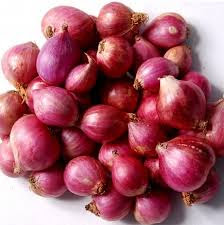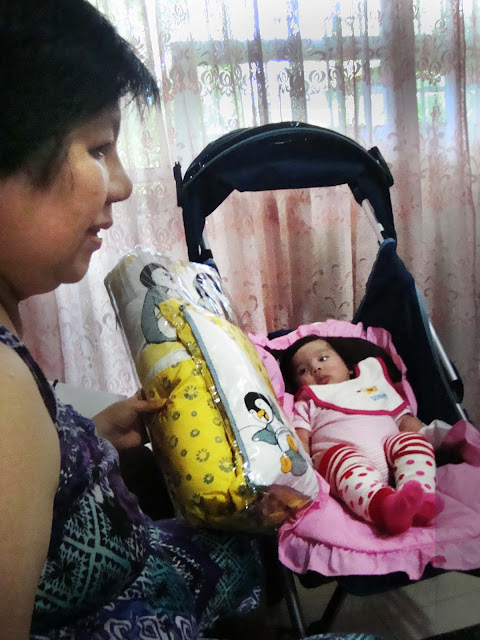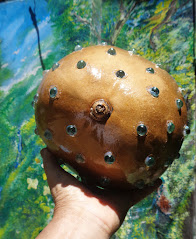Natural Medicine Revival
Enshrine Traditional Medicine Through Research and Extension
Dr Abe V Rotor
Retired professor, UST, DLSU-D, SPU-QC
1. Smoke therapy (suob) – old folks’ aroma therapy.
Basang, my auntie who took care of me when I was a child, was sick and dying. Doctor Catalino, our rural physician, gave her injection but her condition did not improve, and now she was in a pit of convulsion. As a last ditch Cousin Bistra who knew something about herbal cure gathered leaves of kamias (Averrhoa balimbi) and roasted it on charcoal until a characteristic aroma began to fill the room. Fanning it over the patient face, with prayers chanted, Basang began to calm down, the color of her skin improved, and soon fell into deep sleep.Dr. Precila Delima, holder of a doctorate degree in biology from UST, related in class a practice among the Ibanag of Cagayan of using suob by mothers who have just given birth. Garlic and shallot onion (Sibuyas Tagalog) are roasted on charcoal, and packed with cloth. While still warm the patient sits on the pack for several minutes, with her whole body covered with blanket. She perspires profusely, eliminating wastes and toxins from her body. The whole procedure is closely attended to by the “olds” in the family with the direction of the village manghihilot or homegrown midwife (kumadrona or partera Ilk.). Old folks believe that this practice is important because it "drives out evil spirits or wards them off" in order to prepare the way the mother faces the crucial responsibility of motherhood – after child bearing follows the bigger task - child rearing. (Precila C. Delima, Ph.D. is presently Executive Officer at Isabela State University. Isabela State University. Cauayan, Cagayan Valley),
2. Herbals as First-Aid and Home Remedy
There is always oregano (Coleus amboinicus) at home, ready to ease cough and sore throat. I imagine myself wearing a handkerchief wrapped around my forehead, advising my family and neighbors not to take cough drops or antibiotics for simple colds. I tell them to pick a young leaf of Oregano, chew it with fruit juice or soft drink. Or blanch it, extract the juice, and add sugar and warm water. It is practical and there are no side effects. And what a feeling! No wonder the plant’s name comes from the Greek words, Ore/Oros which means mountain, and ganos joy. “Joy on a mountain.”
Variegated and native oregano (Coleus amboinicus)
Pliny the Elder used oregano to ease bad digestion. To Italians, it is the secret of their cooking and pizza, just as the Mexicans added it to chili con carne. Dinuguan tastes best with this aromatic herb.
On the other hand, I found out that Oregano is an insect repellant. Notice that mosquitoes, flies, fleas and roaches are kept away by its aromatic scent. It can be prepared as a natural pesticide, by simply crushing a few leaves in water, and applying the solution on the plants to control common garden pest. Oregano has essential oil and thymol, which is a strong antiseptic and disinfectant.
-----------------------------------------------------
Ethnobotany is the study of a region's plants and their practical uses through the traditional knowledge of a local culture and people. An ethnobotanist thus strives to document the local customs involving the practical uses of local flora for many aspects of life, such as plants as medicines, foods, and clothing. Internet
I have observed many rural homes surrounded by other useful plants such as soro-soro, a species of Euphorbia, used to control ringworm. It is also an excellent meat tenderizer and vegetable. The leaves are chopped and stuffed in lechon and relyeno. Lagundi is good for fever and flu, alovera (Aloe vera) for burns, pandakaki (Tabernamontana pandacaqui) for minor cuts. Tanglad is a condiment for kuhol. Young leaves of native bayabas (Psidium guajava) are good for skin infection and allergy. Ilang-ilang (Cananga odorata) and sampaguita (Jasminium sambac) are natural air fresheners in the surroundings. A home garden is very useful indeed as it provides fresh vegetables and herbals as home remedies.
2. Takip-kuhol (Centella asiatica) - A "Panacean" Home Remedy
Takip kuhol is a highly regarded plant of many uses; in fact it has a panacean reputation in folk medicine. Ask an herbolario, a bona fide housewife, or a village elderly. And they would say, "Takip kuhol lang ang kailangan diyan." (All you need is Centella asiatica, the scientific name of the plant.)
Of course they are talking about common ailments, referring to ordinary colds, fever, flu, skin infection, sore throat, boil (pigsa), headache, constipation, blows and bruises. The herbal may be prepared as decoction (boiled) or fresh. It may be toasted and served as tea or infusion.* For external use, the leaves are crushed and applied as ointment or liniment with Vaseline or coconut oil.
In a research conducted, takip-kuhol leaf extract was found to be an antibacterial agent against three common infectious bacteria, which explains the efficacy on the plant against infectious diseases which these bacteria cause.
- Escherichia coli, a type of bacteria that lives in our intestines. Most types of E. coli are harmless. However, some types can make us sick and cause diarrhea.
- Staphylococcus aureus, a bacterium frequently found in the human respiratory tract and on the skin.
- Salmonella enterica. Salmonellosis is an infection with bacteria called Salmonella. Most persons infected with Salmonella develop diarrhea, fever, and abdominal crampsPure extract of Takip-kohol leaves is effective against Escherichia coli, Staphylococcus aureus and Salmonella enteritidis. Boiled extract is not as effective, especially against E coli.
Panacea is often referred to as cure-all, which is mythological, Panacea being the Greek goddess of healing. There is no single remedy for all ailments. As a caution, takip kuhol should not be used as a prescription to serious ailments and diseases, specially those that require medical attention.~
3. A simple remedy for diarrhea
Diarrhea claims the lives of 3 million people, with nearly 2 million of them children under five years old. Yet a simple and inexpensive treatment can prevent many of those deaths.Here is a simple formula for oral rehydration therapy (ORT): a fistful of sugar + a pinch of salt + a jug of water. This old home remedy is now recognized by the WHO and UNICEF of the United Nations (UN-WHO) which recently reported that it has saved some 40 million lives. This home grown remedy hopes to further demote diarrhea from its present status as the second leading cause of death among children, to an ordinary ailment that can be readily prevented or treated.
According to WHO/UNICEF, ORT should begin at home with home fluids or home-prepared sugar and salt solution at the first sign of diarrhea to prevent dehydration (loss of body fluid). Feeding should be continued at all times.
However, once the patient is dehydrated, the regimen should be switched to official preparation usually in pre-measured sachets that are ready to be mixed with water. The formula is commercially sold or supplied by local government and relief agencies like WHO and UNICEF. In 1996 alone UNICEF distributed 500 million sachets to over 60 developing nations.
Everyone experiences at certain times symptoms that may be associated with diarrhea, such as too much drinking of alcohol, intolerance to wheat protein (gluten) or lactose (milk), or chronic symptom to food poisoning. It is also associated with anemic condition, pancreatic disorder, and radiation treatment (chemotherapy).
4. Corn silk tea is good for the kidney.
 When boiling green corn, include the inner husk and the silk as old folks do. Add water than normally needed. Drink the decoction like tea. It is an effective diuretic. But how can we make it available when we need it?
When boiling green corn, include the inner husk and the silk as old folks do. Add water than normally needed. Drink the decoction like tea. It is an effective diuretic. But how can we make it available when we need it?

Silk is the composite pistil of corn which receives the pollen necessary in pollination. Internet photos
Sister Corazon C. Loquellano, RVM, in a masteral thesis at UST came up with corn tea in sachet. Just powder dried corn silk and pack it in sachet like ordinary tea. The indication of good quality is that, a six-percent infusion should have a clear amber color with the characteristic aroma of sweet corn. It has an acidity of about 6 pH. You may add sugar to suit your taste.
5. Succulent pod of radish is a local remedy for ulcer.
 When boiling green corn, include the inner husk and the silk as old folks do. Add water than normally needed. Drink the decoction like tea. It is an effective diuretic. But how can we make it available when we need it?
When boiling green corn, include the inner husk and the silk as old folks do. Add water than normally needed. Drink the decoction like tea. It is an effective diuretic. But how can we make it available when we need it?
Silk is the composite pistil of corn which receives the pollen necessary in pollination. Internet photos
Sister Corazon C. Loquellano, RVM, in a masteral thesis at UST came up with corn tea in sachet. Just powder dried corn silk and pack it in sachet like ordinary tea. The indication of good quality is that, a six-percent infusion should have a clear amber color with the characteristic aroma of sweet corn. It has an acidity of about 6 pH. You may add sugar to suit your taste.
5. Succulent pod of radish is a local remedy for ulcer.
It is in a public market of Ho Chi Minh City (Saigon) I found young pods of radish (Raphanus sativus) sold in bundles. We also relish young radish pods as salad or mixed in chop suey. How true is it that it can cure of stomach ulcer?
Prof. Lourdes Jorge tested radish seeds for anti-ulcer properties on albino rats as her masteral thesis in medical technology at UST. Result: Radish seed extract is effective and is comparable to commercial Cimetidine or Tagamet in the treatment of gastric ulcer.
Prof. Lourdes Jorge tested radish seeds for anti-ulcer properties on albino rats as her masteral thesis in medical technology at UST. Result: Radish seed extract is effective and is comparable to commercial Cimetidine or Tagamet in the treatment of gastric ulcer.
6. Oxalic acid in kamias weakens the bones.
 Sinigang with kamias (Averrhoa balimbi) PHOTO is a favorite dish no Filipino kitchen is without. But too much intake of kamias is not good for the health because of the oxalic acid it contains which doctors and nutritionists found to be a cause of osteoporosis. The principle is that, acids react with calcium compounds forming a neutral product – salt. In the process, the bone gets thinner and thinner predisposing it to break especially in old age. Thus, we should caution ourselves from taking too much acidic food, and in particular, kamias and balimbing (A. carambola) which belong to Family Oxalidaceae
Sinigang with kamias (Averrhoa balimbi) PHOTO is a favorite dish no Filipino kitchen is without. But too much intake of kamias is not good for the health because of the oxalic acid it contains which doctors and nutritionists found to be a cause of osteoporosis. The principle is that, acids react with calcium compounds forming a neutral product – salt. In the process, the bone gets thinner and thinner predisposing it to break especially in old age. Thus, we should caution ourselves from taking too much acidic food, and in particular, kamias and balimbing (A. carambola) which belong to Family Oxalidaceae7. Avoid heavy work for 40 days after childbirth.
This is especially true to rural women who do a lot of farm work aside from daily chores. But to urban mothers who are not usually accustomed to heavy physical work, it takes a longer time for them to recover after childbirth. The whole idea is to allow the inner organs to heal and the body physiology to get adjusted with child rearing. Old folks recommend highly digestible and protein-rich food such as cereals, fruits and honey, which are also important in breast-feeding. Cognizant of the welfare of women, government regulation provides for an official maternity leave of sixty days, before and after child delivery.
In the village it is normal to nurse the baby for a year, but weaning may be started as soon as the child’s diet can be supplemented. Old folks would say, “Milk doesn’t come out of the milk tree, it comes out of your blood. Support that flow of blood that is converted into milk for the child.”
8. Roasted shallot onion is an effective suppository.
Old folks heat shallot onion the size of the index finger until it is limp. They then coat the bulb with coconut oil and while still sufficiently warm insert it into the anus. It is a home remedy to reduce extreme fever and to draw out gas that causes kabag. People who have constipation problems resort to this practice.
9. Onion and tomato spray kills harmful bacteria.
Spray derived from the extracts of these plants in low dilution proves to be effective against food bacteria. In certain restaurants it is a practice to spray the food with this stuff before it is served. In others, standing food is sprayed to keep it safe. One problem though is the detection of the characteristic odor of onion, so that it is best to apply the spray on spicy food.
10. Makabuhay and Neem tree extracts are effective in control cockroach (Periplaneta Americana)
Tenorio RW, Nudo L, Roxas R and AC Uichanco, UST Faculty of Pharmacy
 Neem tree (Azadirachta asiatica / A. indica)
Neem tree (Azadirachta asiatica / A. indica)Macabuhay (Tinospora rhumphii) is a liana that grows in the wild. Previous experiments proved that its extract is effective in controlling common rice insect pest and the golden kuhol. Could it be effective in controlling the tough and elusive cockroach? The same question was raised on Neem (Aziderachta asiatica), known as insecticide tree that was introduced into the country from India in the sixties. According to the researchers, extracts of both plants proved effective as direct spray on cockroach. Comparative effectiveness showed that the diluted extract of makabuhay gave a higher mortality that the pure extract, indicating the synergistic effect of water solvent, but only for makabuhay. Neem extract at low level dilution is more effective than that of makabuhay at the same level. While synthetic chemical sprays are more effective than these herbal extracts, the advantage of the latter is their being safe to humans and the environment and does not leave toxic residues.
Part 2 - Natural Medicine Revival
5 Folk Remedies proven effective by UST researchers
In memory of the late Dr. Juan M Flavier, author of the Traditional Medicine Law in the Philippines.
In memory of the late Dr. Juan M Flavier, author of the Traditional Medicine Law in the Philippines.
1. Poultice made of moss heals wounds and relieves pain.
This is a common practice in the highlands where moss is plentiful and luxuriantly growing. Fresh moss is crashed into a pulp and directly applied on a fresh or infected wound, loosely wrapping it with gauze or cloth strip.
Lourdes V. Alvarez in her masteral thesis at the University of Santo Tomas
2. Common moss is a practical source of antibiotics
The common most often used in its dried form as substrate for orchids has a puzzling characteristic. It resists rotting and does not arbor the breeding of microorganisms that are pathogenic to the orchid. From this observation coupled by the fact that indigenous people use dried moss to cover wounds and skin diseases, led the researches to conduct an experiment on the antibiotic properties of mosses. The results are positive to bacteria causing skin infection, but the range of antibiosis has yet to be determined. The researchers recommend that further studies be conducted on methods of extraction, other than the use of ethanol, in isolating the active principle which is the key to the antibiotic property of mosses. (Thesis: Nabong W, Aquino M, Orlino C Ramos J and H Sumabit, UST 202)
3. Bunga de Jolo used as nganga has bactericidal properties.
Vetchia merillii, a palm relative of the bunga (Areca catechu) was found to have a unique potency against the bacterium, Bacillus proteus as well as other pathogens causing infection. Direct extract from the seed showed potent inhibition against the test organisms, a feat the control (Penncilium type) failed to show. This explains the usefulness of bunga de jolo as a substitute of bunga (Areca catechu) as nganga in the absence of the latter. Both produce nuts, which are used by older people for mastication with or without the betel leaf and the occasional lime that goes with the preparation. (Thesis: Villaluz MC, Enebrad K, Garcia R and V Guzman, UST 2002)
4. Papaya seed has antibiotic properties
 With the increasing resistance of bacteria to the group of Penicillin antibiotics, scientists are looking into more potent antibiotics. Modern antibiotics however, are expensive and are not readily available particularly in the countryside. But natural antibiotics abound in nature. One such source is the ordinary papaya, specifically the native or solo variety. The researchers claim that the papain in papaya has an antibiotic property and the most likely part where the active compound is concentrated is the seeds, which are thrown away for no use except as propagation material. The seed oil is potent against both gram negative and gram positive bacteria, such as Staphylococcus.
With the increasing resistance of bacteria to the group of Penicillin antibiotics, scientists are looking into more potent antibiotics. Modern antibiotics however, are expensive and are not readily available particularly in the countryside. But natural antibiotics abound in nature. One such source is the ordinary papaya, specifically the native or solo variety. The researchers claim that the papain in papaya has an antibiotic property and the most likely part where the active compound is concentrated is the seeds, which are thrown away for no use except as propagation material. The seed oil is potent against both gram negative and gram positive bacteria, such as Staphylococcus. This explains why papaya is a health food. Although the oil has also shown anti-fungal effects, the researchers recommend further studies in this aspect. They also recommend further studies in the preparation of the seed oil as antibiotic drop or ointment. (Thesis: Casas JM, Cadiz RI
5. Succulent pod of radish is a local remedy for ulcer.
It is in a public market in Ho Chi Minh City (Saigon ) where I found young pods of radish (Raphanus sativus) sold in bundles. We also relish young radish pods as salad or mixed in chopsuey. How true is it that it can cure of stomach ulcer?


Prof. Lourdes Jorge tested radish seeds for anti-ulcer properties on albino rats as her masteral thesis in medical technology at UST. Result: Radish seed extract is effective and is comparable to commercial Cimetidine or Tagamet in the treatment of gastric ulcer ~












































